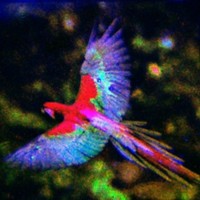Advertisement
Grab your lab coat. Let's get started
Welcome!
Welcome!
Create an account below to get 6 C&EN articles per month, receive newsletters and more - all free.
It seems this is your first time logging in online. Please enter the following information to continue.
As an ACS member you automatically get access to this site. All we need is few more details to create your reading experience.
Not you? Sign in with a different account.
Not you? Sign in with a different account.
ERROR 1
ERROR 1
ERROR 2
ERROR 2
ERROR 2
ERROR 2
ERROR 2
Password and Confirm password must match.
If you have an ACS member number, please enter it here so we can link this account to your membership. (optional)
ERROR 2
ACS values your privacy. By submitting your information, you are gaining access to C&EN and subscribing to our weekly newsletter. We use the information you provide to make your reading experience better, and we will never sell your data to third party members.
Materials
Making bright colors out of thin air
Precisely placed airholes in a polymer produce matte structural colors
May 23, 2016
| A version of this story appeared in
Volume 94, Issue 21
Certain vibrant colors found in nature, such as the blues and purples in bird feathers and butterfly wings, are created not by pigments but by physical nanostructures that interact with light, a phenomenon known as structural color. Such colors are often shimmery, and the reds and greens typically carry a blue tint—both properties that limit using structural color to make paints and coatings, where matte colors are often the goal. Shin-Hyun Kim of Korea Advanced Institute of Science & Technology and colleagues have found a way to make a full spectrum of pure matte colors without pigments by patterning a polymer with air pockets (ACS Appl. Mater. Interfaces 2016, DOI: 10.1021/acsami.6b03217). Prior theoretical work predicted that the best way to make matte reds would be with particles that have a refractive index similar to that of air. Kim and coworkers tested this idea by dispersing silica nanoparticles in polyethylene glycol dimethacrylate, which they then cross-linked to create a solid resin. Next, they used acid to dissolve the silica, leaving a hodgepodge of air pockets approximately 200 nm in diameter, which produced a matte red film that could conceivably be used to color various surfaces. By creating material with 168-nm or 185-nm silica particles, the team made blue and green films.





Join the conversation
Contact the reporter
Submit a Letter to the Editor for publication
Engage with us on Twitter